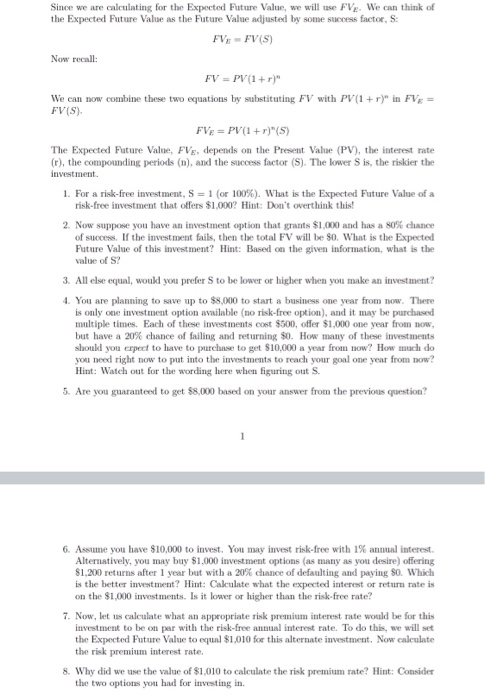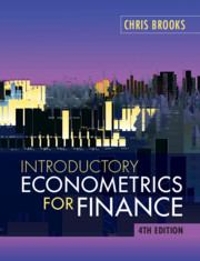
please help me solve all the problems below with steps. thank you.
Since we are calculating for the Expected Future Value, we will use FVe. We can think of the Expected Future Value as the Future Value adjusted by some success factor, S: FVs - FV(S) Now recall: FVPV (1 + r)" We can now combine these two equations by substituting FV with PV (1 + r)" in FVe = FV(S) FVe = PV (1 + r)"(S) The Expected Future Value, FVe, depends on the Present Value (PV), the interest rate (r), the compounding periods (n), and the success factor (S). The lower S is, the riskier the investment. 1. For a risk-free investment, S = 1 (or 100%). What is the Expected Future Value of a risk-free investment that offers $1,000? Hint: Don't overthink this! 2. Now suppose you have an investment option that grants $1,000 and has a 80% chance of success. If the investment fails, then the total FV will be $0. What is the Expected Future Value of this investment? Hint: Based on the given information, what is the value of S? 3. All else equal, woukl you prefer to be lower or higher when you make an investment? 4. You are planning to save up to $8,000 to start a business one year from now. There is only one investment option available (no risk-free option), and it may be purchased multiple times. Each of these investments cost $500, offer $1,000 one year from now, but have a 20% chance of failing and returning $0. How many of these investments should you erpect to have to purchase to get $10,000 a year from now? How much do you need right now to put into the investments to reach your goal one year from now? Hint: Watch out for the wording here when figuring out S. 5. Are you guaranteed to get $8,000 based on your answer from the previous question? 6. Assume you have $10,000 to invest. You may invest risk-free with 1% annual interest. Alternatively, you may buy $1,000 investment options (as many as you desire) offering $1,200 returns after 1 year but with a 20% chance of defaulting and paying 80. Which is the better investment? Hint: Cakulate what the expected interest or return rate is on the $1,000 investments. Is it lower or higher than the risk-free rate? 7. Now, let us calculate what an appropriate risk premium interest rate would be for this investment to be on par with the risk-free annual interest rate. To do this, we will set the Expected Future Value to equal $1,010 for this alternate investment. Now calculate the risk premium interest rate. Why did we use the value of $1,010 to calculate the risk premium rate? Hint: Consider the two options you had for investing in
 please help me solve all the problems below with steps. thank you.
please help me solve all the problems below with steps. thank you.





